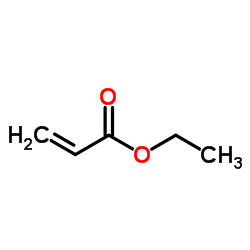| Structure | Name/CAS No. | Articles |
|---|---|---|
 |
Ethyl acrylate TOP1 supplier
CAS:140-88-5 |
|
 |
2-(2-ethoxyethoxy)ethyl prop-2-enoate
CAS:7328-17-8 |
|
 |
Ethyl methacrylate
CAS:97-63-2 |